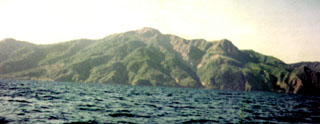Report on Paluweh (Indonesia) — September 1981
Scientific Event Alert Network Bulletin, vol. 6, no. 9 (September 1981)
Managing Editor: Lindsay McClelland.
Paluweh (Indonesia) Lava dome destoyed; pyroclastic flows
Please cite this report as:
Global Volcanism Program, 1981. Report on Paluweh (Indonesia) (McClelland, L., ed.). Scientific Event Alert Network Bulletin, 6:9. Smithsonian Institution. https://doi.org/10.5479/si.GVP.SEAN198109-264150
Paluweh
Indonesia
8.32°S, 121.708°E; summit elev. 875 m
All times are local (unless otherwise noted)
No pyroclastic flows were observed during the growth of the lava dome first seen 31 January (although some sliding occurred), but it generated blasts of hot air felt by residents of a flank village. They were evacuated by the end of February, after VSI had issued a volcanic hazard warning. By July, the lava dome was 200 m high, its volume exceeded 8.5 x 106 m3, and its summit had become the highest point on the volcano at 875 m above sea level. Explosive activity resumed on 5 September between 2010 and 2105, producing a 1-km-high plume. This activity was followed by the destruction of the lava dome. Pyroclastic flows and nuées ardentes d'avalanche moved downslope, depositing 5-20 cm of tephra at one village, and starting fires at 36 structures, including a church and five shelters, at another. Because residents had previously been evacuated, there were no casualties. Since the destruction of the dome, the 3-component seismograph monitoring the volcano has recorded shallow earthquakes which VSI believes may be generated by sliding from remnants of the dome.
Geological Summary. Paluweh, also known as Rokatenda, forms the 8-km-wide island of Palu'e north of the volcanic arc that cuts across Flores Island. The broad irregular summit region contains overlapping craters up to 900 m wide and several lava domes. Several flank vents occur along a NW-trending fissure. A large eruption in 1928 included strong explosive activity accompanied by landslide-induced tsunamis and lava dome emplacement. Pyroclastic flows in August 2013 resulted in fatalities.
Information Contacts: A. Sudradjat and L. Pardyanto, VSI.

